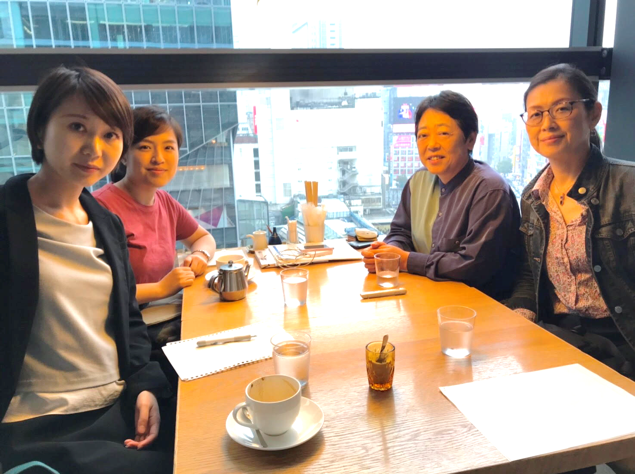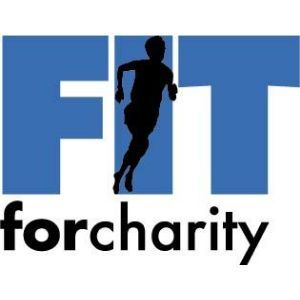NPO Japan First Aid Society
FIT For Charity 2018 beneficiary organization, NPO Japan First Aid Society, provides mainly conducts activities promoting emergency first response care for children. We spoke with Jun Okanoya, the president of the association.

FIT: Please tell us about Japan First Aid Society.
Okanoya: We started our activities in 1993 and established an NPO in 2000. There are two pillars for our activities. The first pillar of our activities is to teach about first aid and spread the information so that the people can protect themselves. The second pillar of our activities is to provide disaster relief, support the people who is providing relief, and teach first aid techniques to the people providing the support.
Since JFA is a non-profit organisation, those who teach the members are also members. In order to teach first aid, they must have an existing resuscitation instructor qualification or a Japanese First Aid Society first aid qualification. Those who have the qualifications are actively take part as instructor members around the country. Those who do not have qualifications take part by helping the rescue team when there is an event, serve as official judges for car races and such. Activities also include supporting the rescue team at marathon event as well as chaperoning at children’s events.
As for disaster relief, we teach and spread the international standards. Support activities also include support at the scene of an emergency as well. However, it can be dangerous if someone takes part without having knowledge of safety and disaster support. Therefore, we believe that it is a big part of our job to allow our members to not feel stressed even after returning home.
FIT: Are there any differences between the first aid method taught by JFA and others?
Okanoya: We are looking for someone who can take the initiative and provide first aid after they have learned about it. Many organisations use dolls when teaching first aid, but we use actual people so that the simulation closely resembles real-life emergency situations. Our courses are well received because of this.
FIT: Could you tell us about the history of establishing the organisation?
Okanoya: Around 1990, some of my friends became pregnant and we wanted to learn first aid for children. There were many places, including the fire department that offered first aid training for adults, but not for infants. We went to the fire department to learn first aid for infants, but they didn't have infant-sized dummy and told us to imagine the adult sized dummy as an infant and apply first aid skills. It wasn’t easy to do that. At that time, there was no concept of first aid for infants.
At the place I used to live, I was able to hear the broadcasts from the US military bases and I heard them offering training for first aid for infants often. Therefore, I thought first aid training for infants were also available in Japan, but that was not the case. When I asked someone at the base where I can learn, I was told anywhere in the US, so I went to the closest US territory, which was Guam. I purchased an infant-sized dummy, brought it back, and the idea to spread the first aid method started between similar aged mothers and nursery teachers.
FIT: Could you explain about first aid methods?
Okanoya: Originally, first aid method was a way to prevent people from getting hurt. Therefore, it was something that needed to be done every day. For example, if someone was crossing the street while looking at their smart phone by the time you shout “watch out!”, an accident has already occurred. The most important first aid method would be to notice that danger and call out to the person and make them aware.
Once you learn first aid skills, when an emergency occurs, the feeling of wanting to help out increases. However, unlike the normal society, emergency situations can involve high risk. The focus of our training is on how to be able to perform well in those situations, not in daily lives.
It is also important to know about “disaster relief stress” (stress on people who helped in disaster areas) before going to help at an emergency site. If you help the people who injuries or illnesses in the disaster area, that alone can make you feel like you are too privileged and make you want to stay indoors. For example, a university student who volunteered at a disaster scene may feel troubled and guilty to go out and have fun when other people are in such difficult situations.
This can also happen to professionals. For example, a firefighter who finds a weakened baby may look at the baby and see their own child. If you are aware of “disaster relief stress,” it will help you understand your thinking and feelings. If you don’t, some may become depressed thinking that they are the only one who feels that way and that it is not normal. Some people may get emotional just thinking back to the crisis situation.
Therefore, it is important to communicate that cases like that are not unusual or uncommon. Some people may be able to take steps to reduce the stress if they are aware of it beforehand. During the Great Hanshin-Awaji Earthquake, that idea was still new in Japan. In recent days, research in psychology and medicine is progressing. Now, we have been asked to provide support as safety coordinators during the many disasters to care for the safety of the relief providers.
FIT: How was the FIT donation used?
Okanoya: It doesn’t cost much to provide training in Tokyo. However, if there are people attending from outside of Tokyo, there will be costs like transportation fees, and if they have children, babysitter fees. There are many people who want to attend and learn but cannot because of those costs. But also there are limits to what we can provide. So the burden will fall on the beneficiary. If we can apply the FIT donation to this then we will be able to provide quality training anywhere in the Kanto region.
FIT: Please tell us about a memorable event.
Okanoya: We provided support to families with babies during the Great East Japan Earthquake. We call it “The temporary evacuation project for babies". There were many babies that had gotten wet and then dried again in the same clothing. Babies need to bathe daily but they were without change of clothes and milk. They were only given regular fruit juice. Their bodies tried to keep their heart and brain priority with warmer blood, meaning their hands and feet were cold. At that time, we went around the evacuation centers and took many families with baby to the town with hot spring called Yuzawa-machi in Niigata. Those babies were covered in hives, but after bathing in the hot spring, their skin was soft again the next day. It these types of events that made us so happy and we will continue this type of project in other disasters.
As another example, it makes me happy when I get feedback from people who have attended our training. When they come back for their follow-up training in 2 years later, I ask the trainees if they were able to apply their skills during that time. Even if it is just about applying a band aid, I ask them to tell me anything, to which a mother replied, “I was able to help a choking child and it’s nothing,”. But when you think about it, that isn’t something that should be taken lightly because the mother had saved a child’s life. When I hear stories like that from our trainees, I feel happy that I have been continuing these activities.
FIT: Could you tell us about your future goals?
Okanoya: There are many types of activities going on around us in our daily lives that we aren’t aware of, and I hope that we can be in an environment that those activities can exist naturally. I would like to make a system like that.
I hope the phrase disaster support becomes more widely spread. This should be done more in the school system, however it is difficult to do so currently. The reality is, there is no one who has the skill to.
The reality of school education is that teachers currently don’t have the time to do so. Even if a curriculum is added, who is going to teach it? There are some private schools where the teachers attend our training, however I hope the school education can do better.
There is now a first aid course, which includes knowing how to use AED, that is required to when obtaining a driver’s license. That was not required before. The Ministry of Land, Infrastructure, Transport and Tourism pushed for it. I hope that the Ministry of Education, Culture, Sports, Science and Technology (MEXT) will move to put a system in place, such as requiring teachers to take a first aid test.

